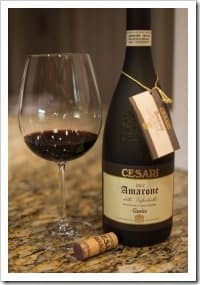Wine can make us reflective . . . thoughtful. It can help us celebrate, facilitate good conversation, and enhance our appreciation of food, music, and art. It even aids in the interpretation of poetry and literature.
Can it teach us anything about life? I’m sure you won’t be surprised that I will argue that it most certainly can.
 Every glass . . . even every SIP . . . of wine is a unique and complex experience that is the result of a myriad of factors and environmental characteristics some of which are defined in the moment, but many of which exerted their influence months and sometimes even years before bottling. The grape varietal, the terroir (that mystical nexus of long term climatological, geological, and biological characteristics tempered by more immediate weather and environmental factors), the culture, and the winemaker’s personality all contribute to the magic that occurs when we taste.
Every glass . . . even every SIP . . . of wine is a unique and complex experience that is the result of a myriad of factors and environmental characteristics some of which are defined in the moment, but many of which exerted their influence months and sometimes even years before bottling. The grape varietal, the terroir (that mystical nexus of long term climatological, geological, and biological characteristics tempered by more immediate weather and environmental factors), the culture, and the winemaker’s personality all contribute to the magic that occurs when we taste.
And in most wine producing areas in the world, the culture has developed specific techniques relative to the type of wine produced that elicit the best possible features of the wine. One clear illustration of this can be found on the eastern shores of Lake Garda in northern Italy in the Valpolicella region.
Not far from Verona, that legendary city where Romeo and Juliet’s stars crossed so tragically, Valpolicella is second only to Chianti in terms of Italian wine production. The most famous and sought after wine of Valpolicella is the rich and luscious Amarone.
Typically a blend of Corvina, Molinara, and Rondinella grapes, Amarone is produced in a unique tradition. Once harvested, the grapes are left in bunches to dry and “raisinate” in special drying rooms in a process called “passito.” The process reduces the volume of the available juice at pressing by at least one-third, but really intensifies the flavor and character which shows in the rich, dark, fruitful wine. Because the sugar level of the concentrated juice is very high, full fermentation yields a wine high in alcohol but also high in flavor and very full-bodied.
Slightly less well known internationally, but equally appreciated by savvy wine drinkers is the “second” wine of the region called “Ripasso.” The process by which Ripasso is produced is perhaps even more interesting than the “passito” process used in Amarone wine.
Each Autumn once the selected grapes for Amarone have been placed in the drying rooms where they’ll spend the next few months raisinating, the remaining grapes are crushed and fermented to produce standard Valpolicella Classico wine. In late January or early February after the partially dried grapes are crushed and the juice is extracted and sent to fermentation for the Amarone wine, some of the Valpolicella Classico (already fermented into decent wine) is placed over the still sugar-rich skins of these grapes starting a second fermentation. This “re-passing” or “Ripasso” yields a very full-bodied, rich, flavorful wine that rarely disappoints.
My first experience with Amarone and Ripasso came when Lisa and I stayed at a wonderful Bed and Breakfast called Dimora Bolsone in Gardone Riviera on the western shore of Lake Garda. A wonderful local restaurant, Locanda Trattoria Agli Angeli provided the perfect introduction to these great northern Italian wines.

This past week has provided me opportunity to visit with all three of my children, several of my nieces and nephews, three of my five siblings, my parents, and some old friends (of my parents’ generation) who have known me for more than four decades and still love me! I always love spending time with family and friends and this several days has been no exception.
And suddenly I realized . . . I, too, am a unique product of the “terroir” and culture of which I have originated. The places in which I grew up . . . the parents and siblings who raised me . . . the friends (and parents of friends) who cultivated and tended “the vines” . . . obviously the wonderful wife of 32 years who has frequently “pruned” me . . . even the three great kids whom I’ve managed not to damage too terribly. ALL these have contributed to the “me” of this moment.
And what’s more, I’m not yet a fully finished product. I get poured over the better quality grapes of current friendships, re-engaged old relationships, new and different experiences (both my own and those of my family and friends) and I get a chance to go through yet another “fermentation” which in the end makes me more flavorful, bolder, and certainly richer.
So it’s true . . . like the best wines, I’m just getting better (or maybe just more complex and interesting) with age!


